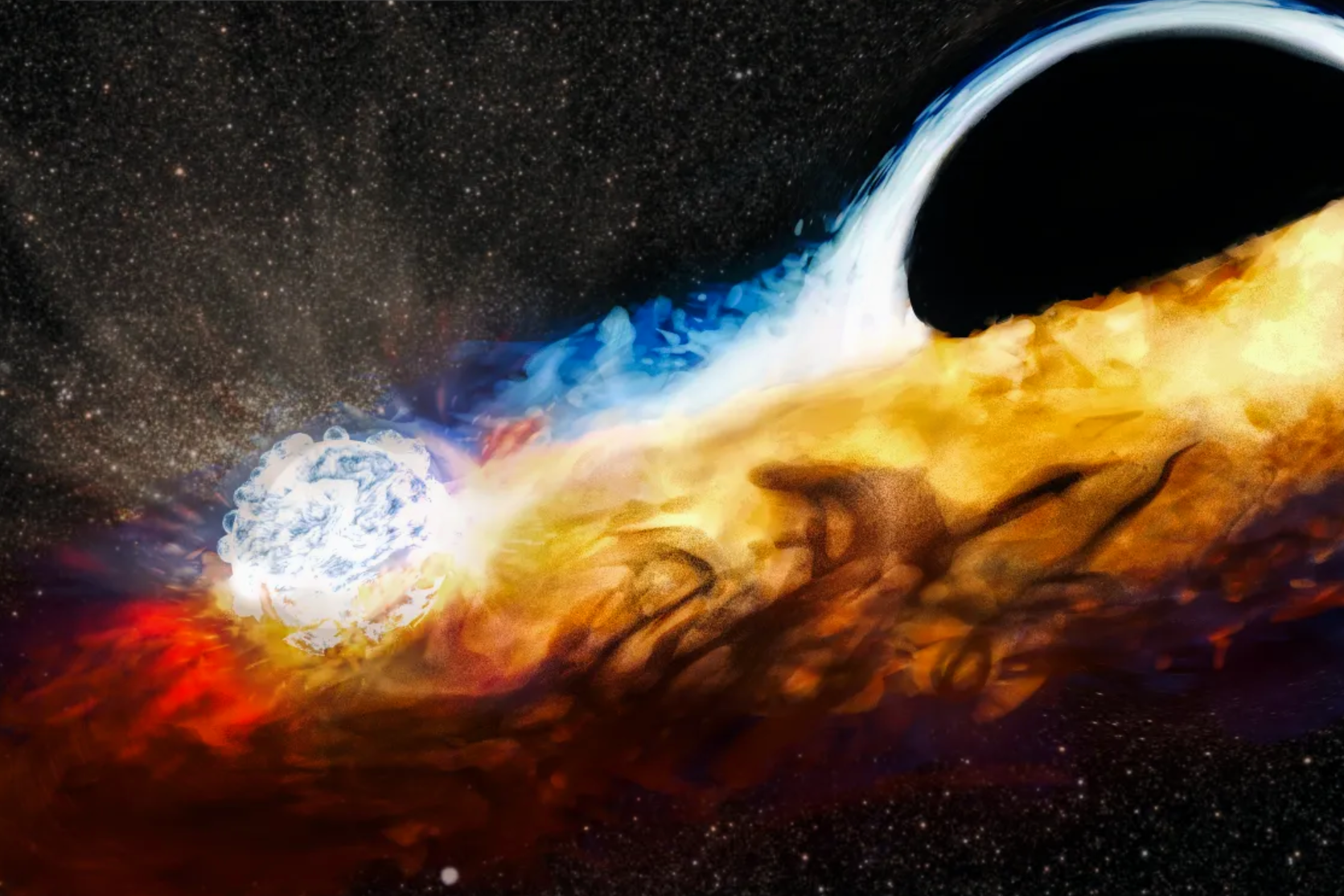Nasa catches black hole tearing star apart, then using its energy to destroy another
Discovery solves two cosmic mysteries that have baffled astronomers for years

Astronomers have observed a supermassive black hole tearing apart a star and using the stellar energy to “pummel” another star.
The discovery, made by an international team of astrophysicists led by Queen’s University Belfast, has connected two cosmic mysteries that have baffled scientists for years.
The first involve something known as “tidal disruption events” (TDEs), where an object gets too close to a black hole and gets torn apart in a single burst of light
The second relates to “quasi-periodic eruptions” (QPEs), where bright flashes from the centres of galaxies were detected as X-rays, which astronomers presumed were connected to supermassive black holes but were not sure how.
“There had been feverish speculation that these phenomena were connected, and now we’ve discovered the proof that they are,” said Dheeraj Pasham from the Massachusetts Institute of Technology.
“It’s like getting a cosmic two-for-one in terms of solving mysteries.”
The team used data from Nasa’s Chandra X-ray Observatory, the Hubble space telescope and Nasa’s Neutron Star Interior Composition Explorer (Nicer) to observe that the remains of a star destroyed by a black hole continued to circle in a disc-shaped “stellar graveyard”.
After a few years, the disc of wreckage had expanded to the point that it was repeatedly colliding with a nearby star that would otherwise have been safe from the black hole.
Each time the star passed through the disc, it produced spectacular bursts of gas and X-rays. This proved that the TDEs were linked to the QPEs.
“This is a big breakthrough in our understanding of the origin of these regular eruptions,” said Andrew Mummery of Oxford University.
“We now realise we need to wait a few years for the eruptions to ‘turn on’ after a star has been torn apart because it takes some time for the disk to spread out far enough to encounter another star.”
The discovery was detailed in a study, titled ‘Quasi-periodic X-ray eruptions years after a nearby tidal disruption event’, which was published in the journal Nature on Wednesday.
Join our commenting forum
Join thought-provoking conversations, follow other Independent readers and see their replies
Comments
Bookmark popover
Removed from bookmarks